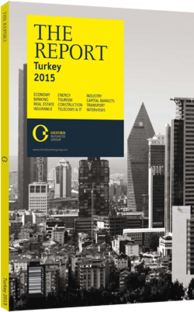Mehmet Şimşek, Minister of Finance: Interview

Interview: Mehmet Şimşek
Should the US Federal Reserve raise interest rates, we may see a reversal in capital flows back to the US. What impact would this have on Turkey?
MEHMET ŞİMŞEK: The Federal Reserve’s potential interest rate hike is a downside risk for emerging markets, but it is manageable. We do not expect a globally synchronised monetary tightening, as the European Central Bank (ECB) and the Bank of Japan’s (BoJ’s) expansionary monetary policy will mitigate the potential impact of the Federal Reserve’s rate hike. Lower petrol prices will also put downward pressure on inflation rates and help to defer the Federal Reserve’s rate hike, as well as encourage both the ECB and BoJ to pursue monetary easing policies more aggressively. The economic recovery in the US should support the global economy through trade and investments. As far as Turkey is concerned, domestic policies will greatly impact Turkey’s growth. While the country has political stability, it also has sound macro-economic fundamentals.
What impact is regional instability having on the economy, and how difficult is it to plan a budget with events seeming so precarious in the region?
ŞİMŞEK: We have significant fiscal space to respond to external shocks. We have reduced the general government-deficit-to-GDP ratio from 10.8% in 2002 to 0.7% in 2014. This is less than one-fifth of the Organisation for Economic Cooperation and Development (OECD) average and one-quarter of the Maastricht criteria. Similarly, public sector debt has fallen from 74% in 2002 to 33.5% of GDP in 2014. In 2014 Turkey’s debt ratio was less than one-third the OECD average.
We have also strengthened the regional dimension of the incentives system and improved the attractiveness of the 6th Region – a grouping of low-income provinces in the east and south-east – making this area more resilient. We believe that in the long run, border tensions will turn into a promising Middle East that embraces stability and democracy, and Turkey, with its high democratic standards, will benefit the most.
To what extent is it possible to quantify the cost of the Syrian refugee crisis?
ŞİMŞEK:The Syrian migration is the largest refugee flow of the century. The total number of Syrian refugees in Turkey has reached almost 2m people, and over the last three years 22 camps have been built in 10 cities. Asylum seekers have been provided with health care, education and food assistance. Turkey alone has spent $4.6bn on the crisis. With this being said, it is difficult to quantify the impact of the refugee crisis on the economy, though there is evidence of food shortages and housing prices increasing in border provinces.
Where does participation banking stand in Turkey in terms of becoming a major financial centre?
ŞİMŞEK: Islamic finance is an area that dates back 30 years in Turkey and 50 years around the world. The World Bank’s Global Islamic Finance Development Centre was established on Borsa Istanbul’s premises. The centre is the World Bank’s only representative office for Islamic finance in the international arena. We are also planning to increase the share of Islamic banking, which is currently around 6% of the banking sector in Turkey today, to 15% by 2023.
With falling oil prices, the current account deficit (CAD) is expected to dip below 5.5% of GDP in 2015. What other measures have been put in place to shrink the deficit should oil prices rise again?
ŞİMŞEK:On a 12-month rolling basis, CAD declined from $65bn at year-end 2013 to $45.9bn at end-2014. Likewise, the current account balance, excluding gold and energy, saw a $6.3bn surplus at end-2014, up from a $4.1bn deficit in 2013. The CAD-to-GDP ratio declined from 7.9% in 2013 to 5.7% in 2014. We had projected the CAD-to-GDP ratio would be 5.4% in 2015 and 5.2% in 2017; however, these number were based on oil prices staying at $101.90. On the condition that oil prices per barrel remain at around $60, these figures will be lower by about two percentage points.
You have reached the limit of premium articles you can view for free.
Choose from the options below to purchase print or digital editions of our Reports. You can also purchase a website subscription giving you unlimited access to all of our Reports online for 12 months.
If you have already purchased this Report or have a website subscription, please login to continue.

